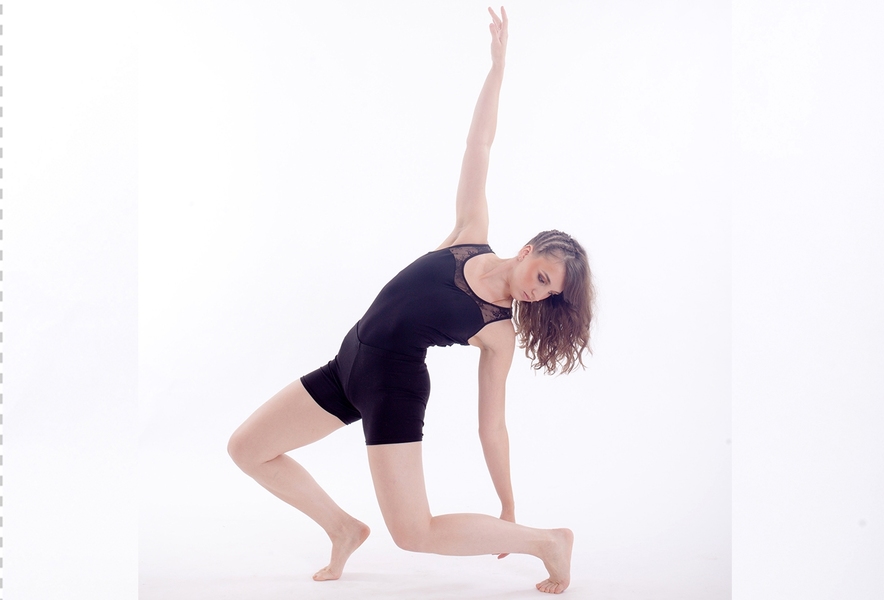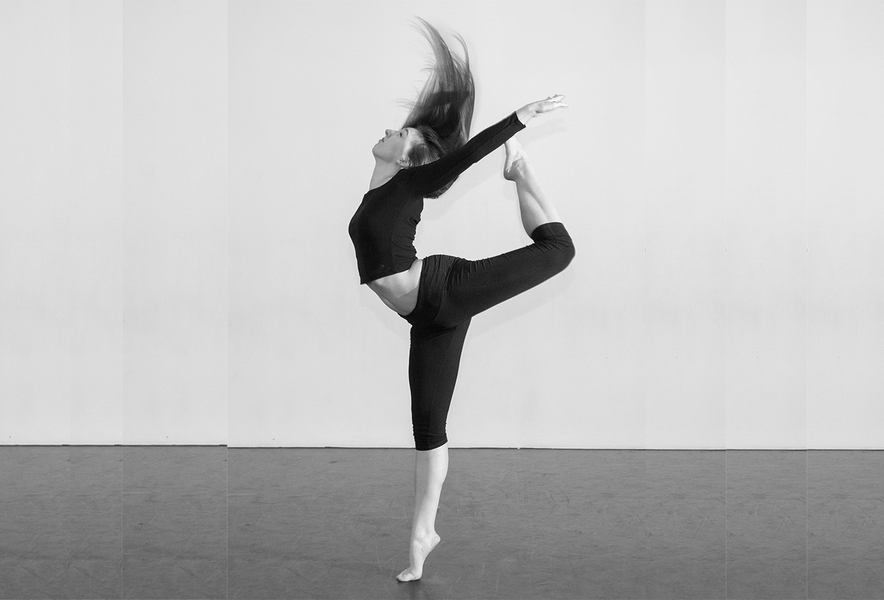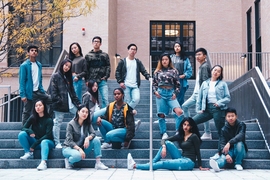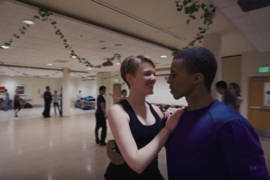Lindsey Orgren spends her days enthusiastically working on organic synthesis and creating new molecules in the lab of Professor Ronald T. Raines. But long before she discovered a desire for a career in science, Orgren established her passion for dance, and has maintained involvement in the art form throughout her academic career.
Orgren is originally from Edmond, Oklahoma, and majored in biochemistry and molecular biology at Hendrix College in Conway, Arkansas. She came to MIT when Raines’ group transferred from the University of Wisconsin at Madison to Cambridge in the summer of 2017. When she leaves the lab, however, she happily transforms into a choreographer extraordinaire in her free time as a member of the MIT Dance Troupe and Project 31, a Boston-based contemporary dance company committed to “exploring the boundaries between contemporary and American Jazz dance.”
Orgren’s choreography will be featured in the company’s upcoming production, “Under Control.” Project 31 Director Kenzie Finn says the piece will draw inspiration “from the emotional implications of struggling to remain in control of one's self while being controlled by external forces. Daily struggles, life altering events, and personal emotions all exert varying degrees of pressure causing humans to fall in and out of control of themselves and the world around them. ‘Under Control’ sheds a light on this personal and emotional struggle through music and movement.”
Q: How long have you been a dancer/choreographer, and what drew you to the art form?
A: I started dancing at the age of seven and have studied in tap, jazz, ballet, modern, contemporary, hip-hop, and lindy-hop. During college, I was a member of the Hendrix College Dance Ensemble, where I performed in many modern and contemporary pieces and began choreographing pieces of my own. During my time at Hendrix, my video-game-inspired contemporary/hip-hop fusion piece "Loading…" was selected to be presented at the American College Dance Association South Conference in 2015. I was also given the Theater and Dance Department’s Graham-Duncan award for ensemble leadership and excellence in dance. Upon graduating in 2015, I moved to Madison, Wisconsin, where I joined Breakthrough Dance Company. I performed several hip-hop and contemporary pieces with them, and continued to explore my choreographic style with two contemporary pieces. I moved to the Boston area in 2017 to continue my graduate education at MIT, and have since joined MIT’s Dance Troupe and Project 31.
As to what drew me to dance originally, at first it was simply one of the litany of hobbies that my parents had me try as a child. I had tried gymnastics, but tumbling was too scary. I had tried soccer, but that was too much running. Dance offered a space where I could be physically challenged and work both individually and within a team in a — mostly — non-competitive environment. Dance sparked a passion in me for performance, one which I have explored through several stage-plays and musicals as well. But dance, with its combined physical challenge and performances aspects, has stayed constant throughout my life. In college, I began to connect with dance even more on an artistic level, performing in some emotional heavy-hitters, as well as developing my choreographic style and figuring out how to tell stories or convey emotions through dance. This has culminated with my most recent piece, "Isolate" [originally choreographed for MIT Dance Troupe’s Fall 2018 show], which the most personal piece I’ve choreographed to date. Through ‘Isolate’ as well as other pieces, I have begun to view choreography as a type of therapy.
Dancing, but especially choreographing, allows me to express my thoughts in a way that feels more natural to me than speaking. As everyone knows, graduate school can be frustrating and exhausting — and at times isolating. In fact, 32 percent of PhD students are at risk of having or developing a psychiatric disorder such as depression. For a while, I admit I was one of those students, and was hit hard by depression in the middle of my graduate career. While not the only factor in my road to recovery, dance has been an integral part of my mental wellbeing. Choreographing "Isolate" has allowed me to work through the frustrations of grad school and my personal life in a productive way, and dancing with Project 31 and MIT Dance Troupe has allowed me to continue pushing myself to my physical limits retain the joy of performing in my life.
Q: What about dance, choreography, and involvement in Project 31 do you find the most inspiring?
A: When I first moved to the Boston area, I explored many dance studios and ended up taking ballet classes at Harvard for my first semester here. It was a great opportunity and allowed me to hone my technique, but I found myself yearning to perform on stage again and be a part of a group of dancers working and performing together. It was a little difficult to break into the dance scene and discover dance groups that would fit the style and time commitment I was looking for. I eventually resorted to sifting through various Facebook pages and found Project 31, a group which at that point had only just formed. I messaged the director, Kenzie, asking if I could audition, and the rest is history. I am so grateful to Kenzie for taking a chance on a stranger, and for helping me grow so much as a dancer in the past year. And especially for allowing me the opportunity to set my choreography on new dancers and expose my work to a new audience.
I am always inspired by meeting other dancers and hearing their stories and how they came to dance. In Project 31, many dancers have made dance their career through teaching and performing in other companies. But others juggle having a work-dance balance the same as I do. For instance, I briefly danced with another company, Evolve Dynamicz, in the Boston area, which was co-directed by a graduate student in architecture. Another dancer in Project 31 directs her own group, Sasso and Company, while working full time as a therapist. These dancers have been an inspiration in their duel passion for dance and their careers, and motivate me to continue to keep both dance and science as integral parts of my life.
Q: What has been the most memorable or impactful moment as a dancer, and how does having an artistic, creative outlet impact your work in the lab?
A: Hmm… I’m having a hard time thinking of one specific moment. But I will say, in general, the moment leading up to the start of a show is absolutely adrenaline-filled, if that counts as impactful. While I don’t get quite as nervous as I used to, my heart still pounds before I step on stage. The good thing is I can use that adrenaline to power my movement, and pour my energy into expressing the choreography to my fullest extent. The hardest part is when the pieces I have choreographed are up. Then I can only watch from the wings and anxiously hope everything goes smoothly, listening hard for how the audience is reacting. While I am not on stage, the applause following my choreography is all the more gratifying.
Taking time to focus on a physical and artistic outlet absolutely helps my mental wellbeing, allowing me to be more productive in lab. Not only that, but I feel having an outlet in which to express myself creatively transfers over into thinking creatively to solve experimental problems or direct my project in exciting ways.
“Under Control” will be performed at the Boston University Dance Theater on Saturday, March 2 at 7:30 p.m. and on Sunday, March 3 at 2 p.m. MIT affiliates may purchase discounted tickets, using promo code MITAC.











